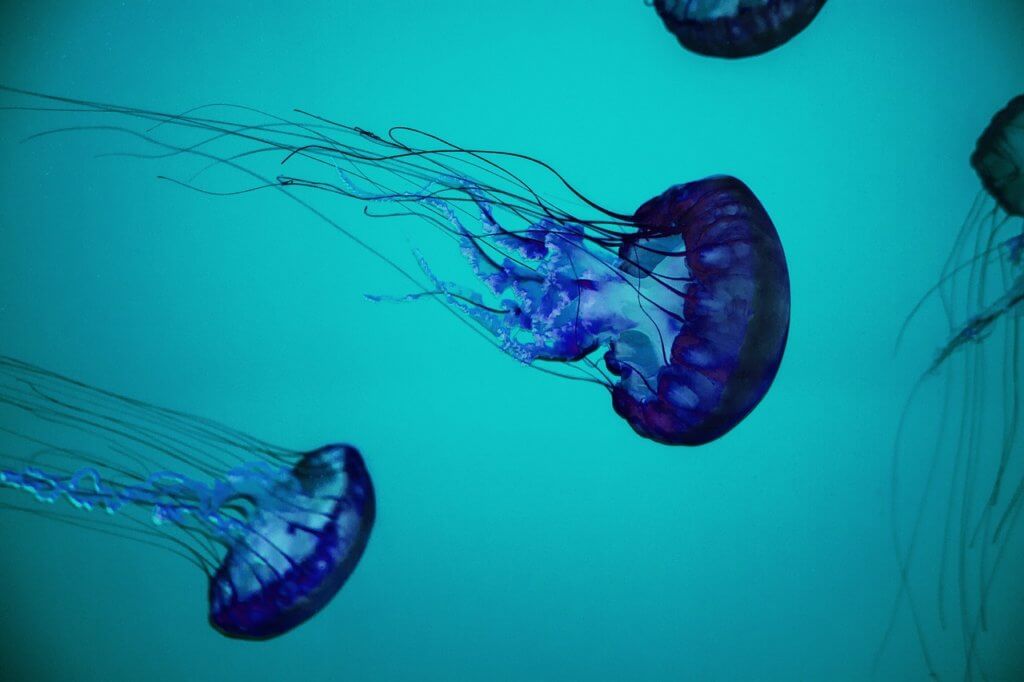In the wake of Ireland’s gorgeous weather, provided to us by the recent heatwave, people have been flocking to their nearest beaches to swim, surf, and paddle board in the open water. However, experts have been warning beach-goers this year to be wary of the common Lion’s Mane jellyfish, as they have appeared to be in higher numbers and larger sizes. An increase in jellyfish means a higher probability of being stung while enjoying the Irish Waters.
Open-water swimming can be a healthy, rejuvenating and rewarding activity at all times of the year. Along with being cognizant of the tides, surf, water temperature and weather, any open water activity in the Irish waters requires paying attention to the jellyfish around you. Ireland is usually not the first place that people attribute to having dangerous jellies in the water, but, there are many species of jellyfish that thrive in the cooler waters off of our coasts. The Barrel, Blue, Common, Compass, and Lion’s Mane jellyfish all inhabit the waters of the Irish Sea, the Celtic Sea, and the Atlantic Ocean.
The most dangerous of these jellies is the Lion’s Mane, which especially likes the cool waters of the Irish Sea. Due to the decrease in predators (fish and turtles) and an increase in water temperatures this year, these jellyfish are being seen in larger numbers and larger sizes. Lion’s Mane jellies are said to be the largest jellyfish in the world, sometimes reaching a diameter of over 2m and tentacles at 58m long. Stings from a Lion’s Mane jellyfish can cause severe back and abdominal pain, headaches, nausea, vomiting, and even cardiac arrest, and there have already been several hospitalizations due to jellyfish stings in this 2018 summer.
“In the last few weeks, we’ve had reports of large adult Lion’s Mane [jellyfish] from the west coast in places like Salthill, Kinvara, Carna and Oranmore in Galway as well as Newquay in Clare and even Cork harbour,” says Jasmine Headlam, PhD and Fullbright Researcher from the Ryan Institute at NUI Galway. “We urge sea swimmers and coastal visitors to report any sightings with photographs if possible to the National Biodiversity Data Centre website and the Big Jellyfish Hunt Facebook page.”
If you find yourself stung while in the ocean, here are the steps to treat a jellyfish sting immediately.
Open Water Swimming: Everything You Need to Know
Steps to Treating a Jellyfish Sting:
1. Call 911 if the victim:
- is having trouble breathing or swallowing
- has a swollen tongue or lips
- is nauseated or vomiting
- is dizzy or has a headache
- has muscle spasms
- has stings over a large part of the body
- the sting is in the eye or mouth
2. Remove Yourself from the Water
3. Rinse with Sea Water
Rinse the affected area thoroughly with sea water.
4. Remove the Tentacles
Tentacles can continue to sting even after the jellyfish is dead, or if the tentacles are separated from the creature. Carefully remove all of the tentacles that may have stuck to the victim without using direct skin-to-tentacle contact (i.e. with tweezers, gloves, or a towel). Do not scape off the tentacles.
5. Apply a Cold Pack
Apply a dry cold pack to the affected area. For example, take a cold pack and place it in a plastic bag, then, wrap the pack in a dry towel and place it over the sting.

Steps to Avoid:
There are several myths surrounding what you can and cannot do when it comes to jellyfish stings. Here are the steps that you should definitely avoid when trying to treat a Lion’s Mane sting.
Do Not:
1. Scrape Away the Tentacles
The method of scraping away tentacles was found to increase pressure on the affected area, causing the stinging capsules to fire more venom into the victim.
2. Urinate on the Wound
Although a popularized theory, the ammonia found in urine will only aggravate the sting, and, although urea was proven to help unstick the tentacles from skin, human urine is too diluted to provide enough urea to help the situation.
3. Apply Alcohol, Ethanol, or Vinegar
Alcohol and Ethanol will also make the nematocysts (the jelly’s venomous coiled thread) fire more rapidly, so, don’t go pouring your beach liquor onto your wound to try to disinfect it.
4. Apply Pressure with Bandages
Jellyfish nematocysts are heavily triggered by pressure, so applying more pressure just prompts the remaining cells to to release more venom.
5. Rub the Area with a Towel
Rubbing with a towel will not only put pressure on the wound, activating the nematocysts, it might also spread the cells around to areas that they have not touched yet.
How to Prevent Jellyfish Stings
1. Wear a wetsuit
The thick material of a wetsuit provides optimal protection from the tentacles of a jellyfish. Try to wear a wetsuit that covers most of your skin.
2. Choose a beach that has a lifeguard
3. Watch for warning flags
Some beaches that experience high volumes of jellyfish designate certain flags to warn swimmers of the condition of the water (i.e. if there is a particularly high number of jellyfish in the water).
Check out our Hard as Nails podcast:
Like this? Check out these other articles:











